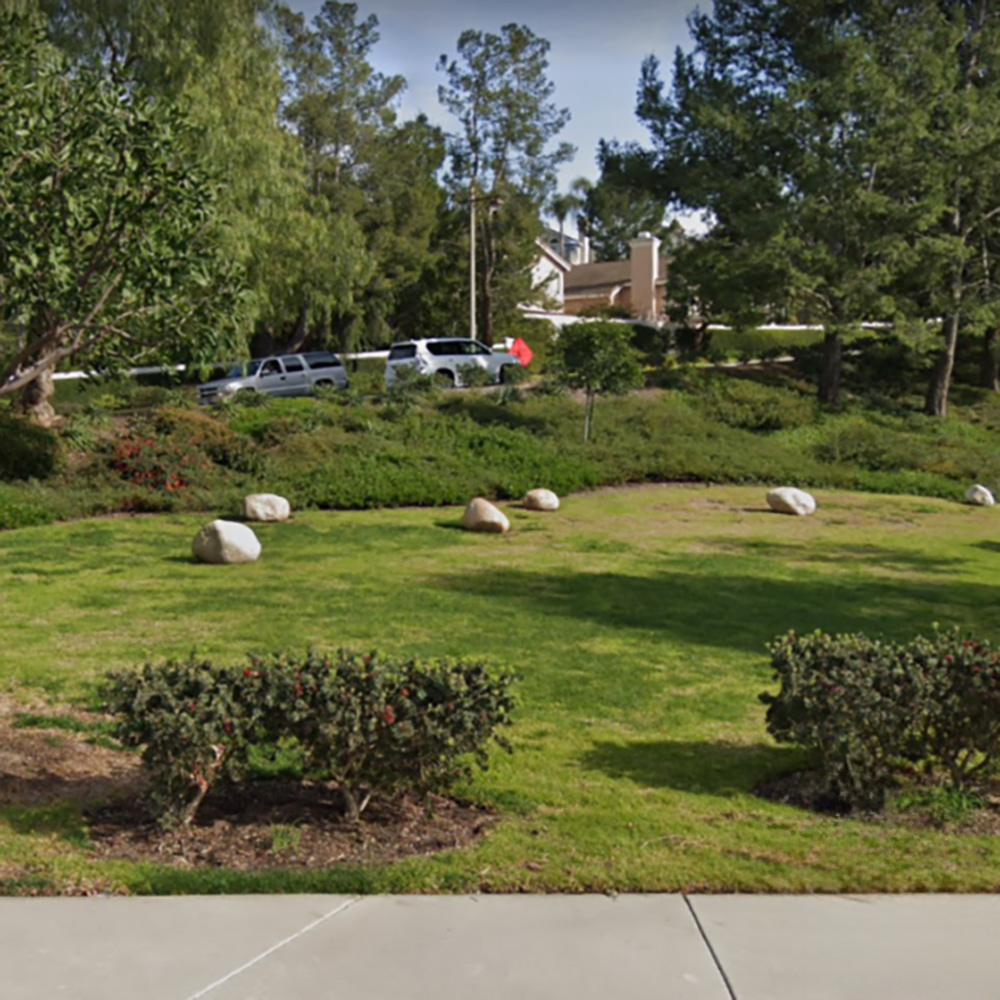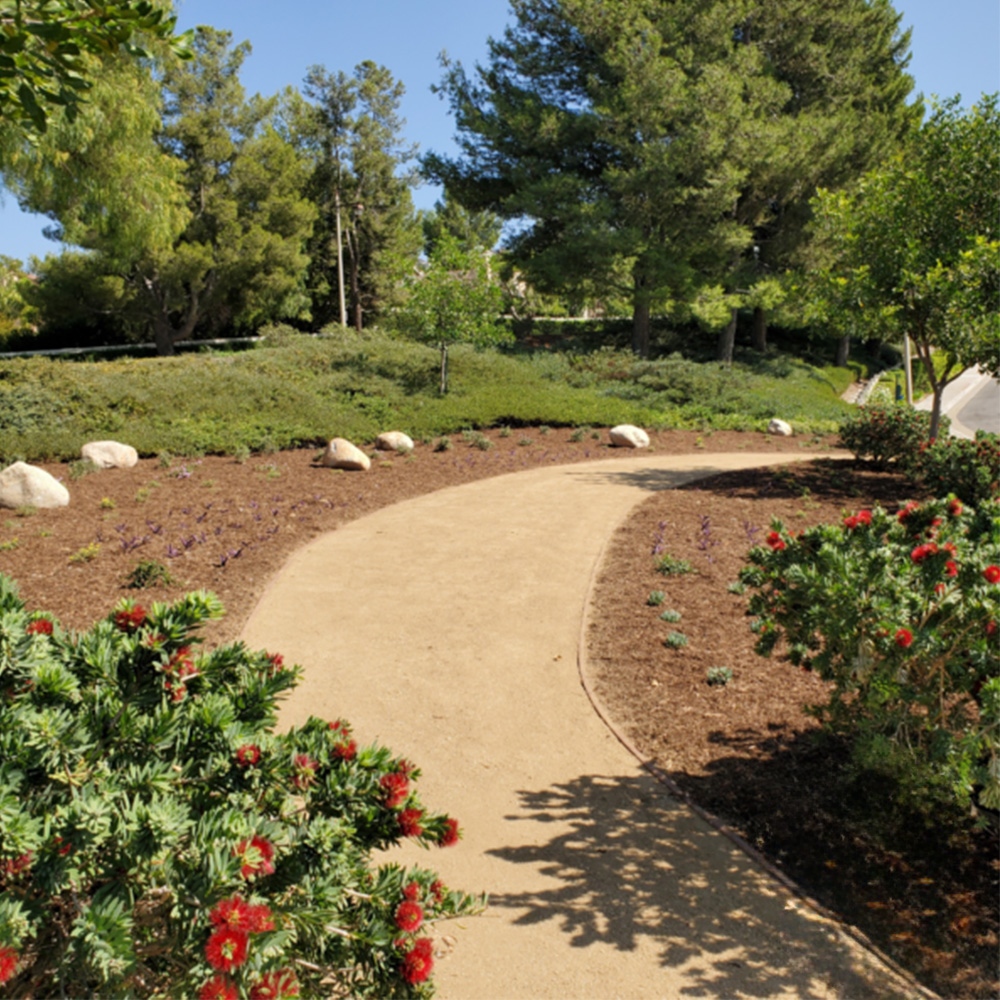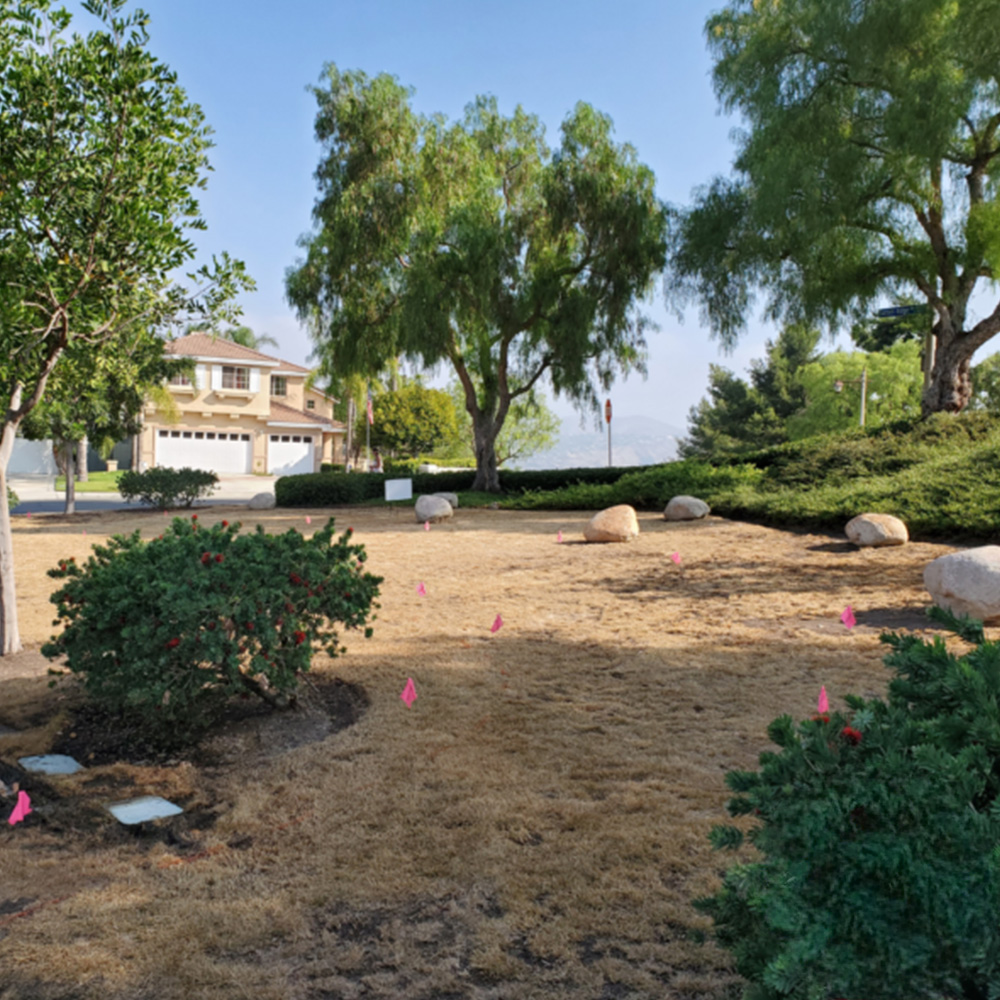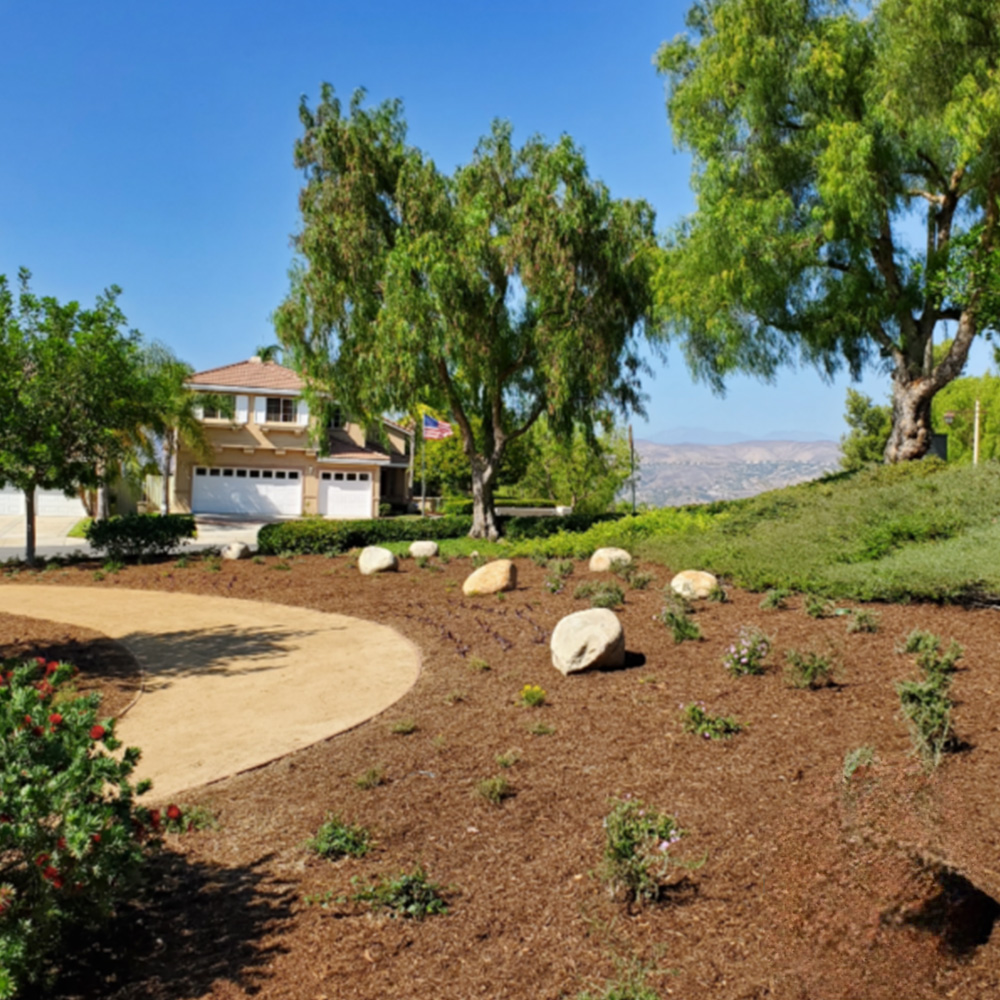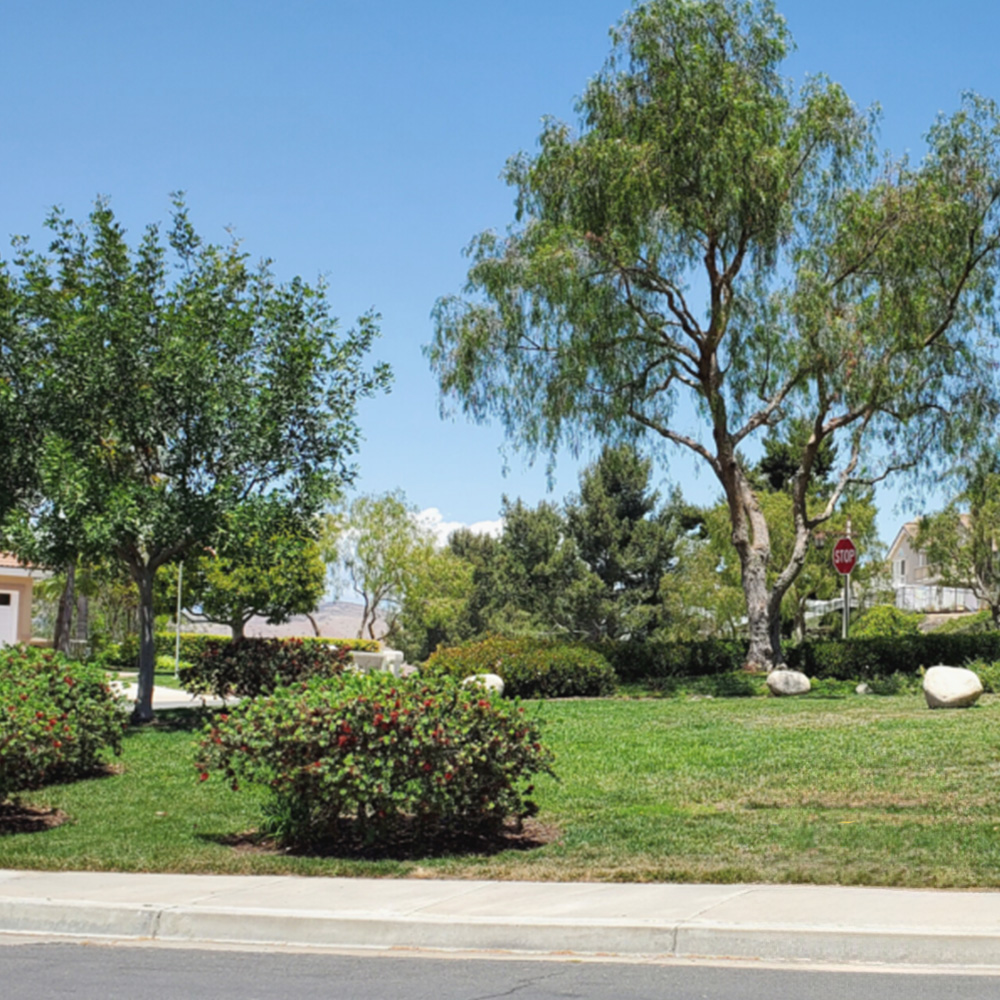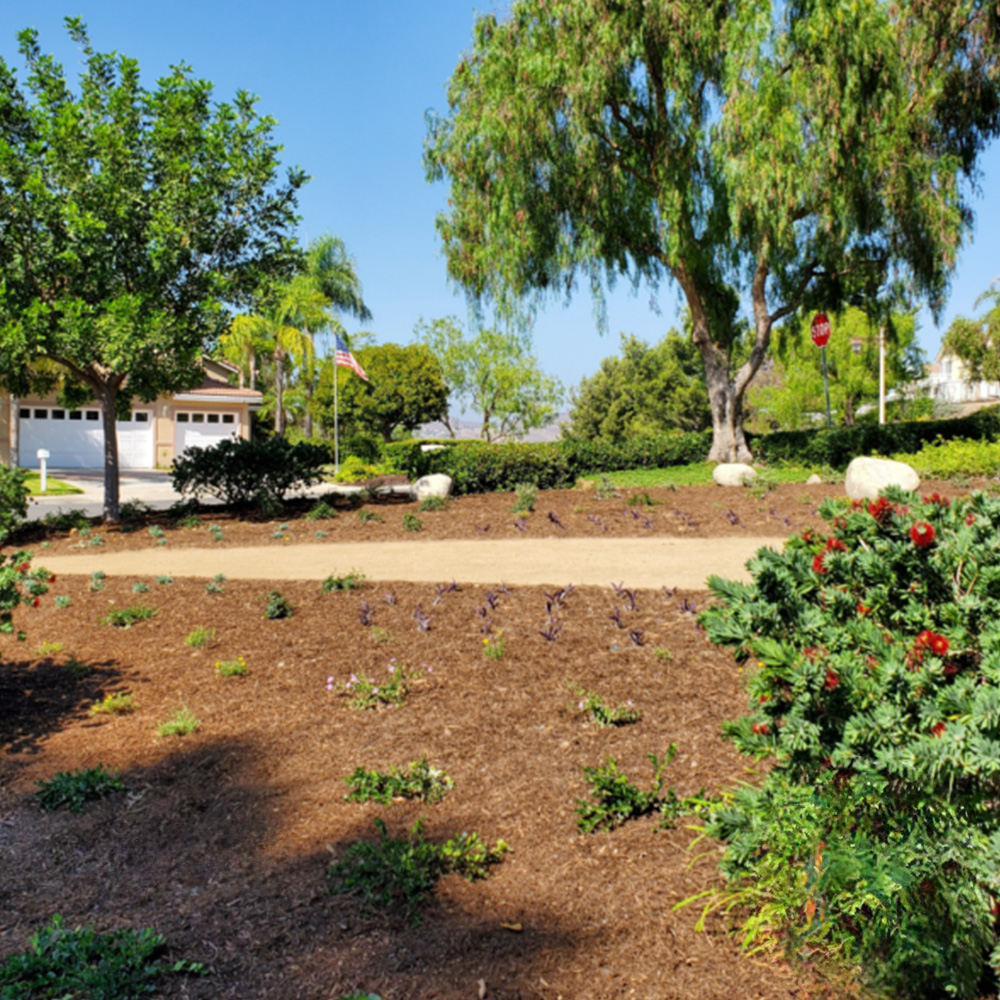Landscapes have a profound impact on HOAs, business parks, and commercial properties. They improve the overall public health of the community, such as air quality, emotional well-being, and longevity. Their inherent beauty increases property values and helps spur community involvement and connection. All these benefits are reasons why we irrigate, keeping plants, flowers, turf, and trees green and healthy.
However, due to increased water demands and more frequent drought cycles, we can no longer continue to use water to irrigate the way we have in the past. We need to rethink the way we utilize our landscape to ensure we are maximizing our water allocation. Landscape irrigation is the largest portion of all residential water usage, and within the landscape the plant that requires the most amount of water per square foot is turf lawns.
Overwatered Turf
Using water wisely is not a straightforward task. The picture below on the left illustrates the inherent problem. During the drought years, the sprinklers in this turf area were turned down. That worked for some areas, but obviously not for others. Increasing the irrigation frequency and duration would green up the brown areas, but doing so would have overwatered the areas that were already green. While we can try to optimize for perfect water coverage, irrigation on turf is inherently inefficient.
The solution?
Remove turf altogether and replace it with a more sustainable landscape as shown in the picture on the right.
Turf Removal #1: Before and After:
Replacing existing turf lawns with well-designed low-water landscapes that incorporate native and climate-appropriate shrubs, grasses, and trees, along with mulch varieties that replenish the soil and retail water, can have major benefits. These benefits include diversifying plant species, lowering irrigation needs and reducing stormwater runoff.
Turf Removal Rebates
Beyond the environmental benefits of turf removal, property owners and managers can also benefit from removing turf by putting money back in their pockets through rebates. Many owners and managers may not be aware that they can receive rebates for removing turf on their property if it is replaced with more a sustainable landscape. The intent of a turf replacement program is to remove existing grass and replace it with organic, drought-tolerant landscaping.
Turf Removal #2: Before and After:
Program Eligibility & Requirements
Here in Southern California, the Metropolitan Water District of Southern California offers a rebate of $2-$3 per square foot up to 50,000 square feet of converted yard per year. The program aims to combine turf removal, irrigation modification, and rainwater retention or filtration to support reuse or soil absorption of rainwater. Your water agency may offer an additional rebate incentive on devices such as weather-based irrigation controllers, soil moisture sensors, rotating nozzles, rain barrels, or cisterns. With these enhancements, you could be putting a big chunk of change back in your pocket!
To be eligible for the rebate, your property must have the following requirements:
Requirements for Program Eligibility
To see the complete list of qualifications required to receive the rebate, see the Socal Water Smart’s website.
So how much money can you actually save? Check out the turf removal calculator here.
Turf Removal #3: Before and After:
Tackling Turf With Bemus Landscape
When working with Bemus Landscape on your next turf removal project, we not only turn your property into a water-saving, California-friendly, native landscape, but we also submit the official application on your behalf, which includes the project start approval and the rebate application.
In order to receive a rebate, properties must apply to reserve rebate funds prior to starting the project. After the reservation, you will have 180 days to complete the project and submit your request for a rebate.
Ready to remove your turf and learn more about the rebate process? Contact our team for more information. We look forward to hearing from you.

